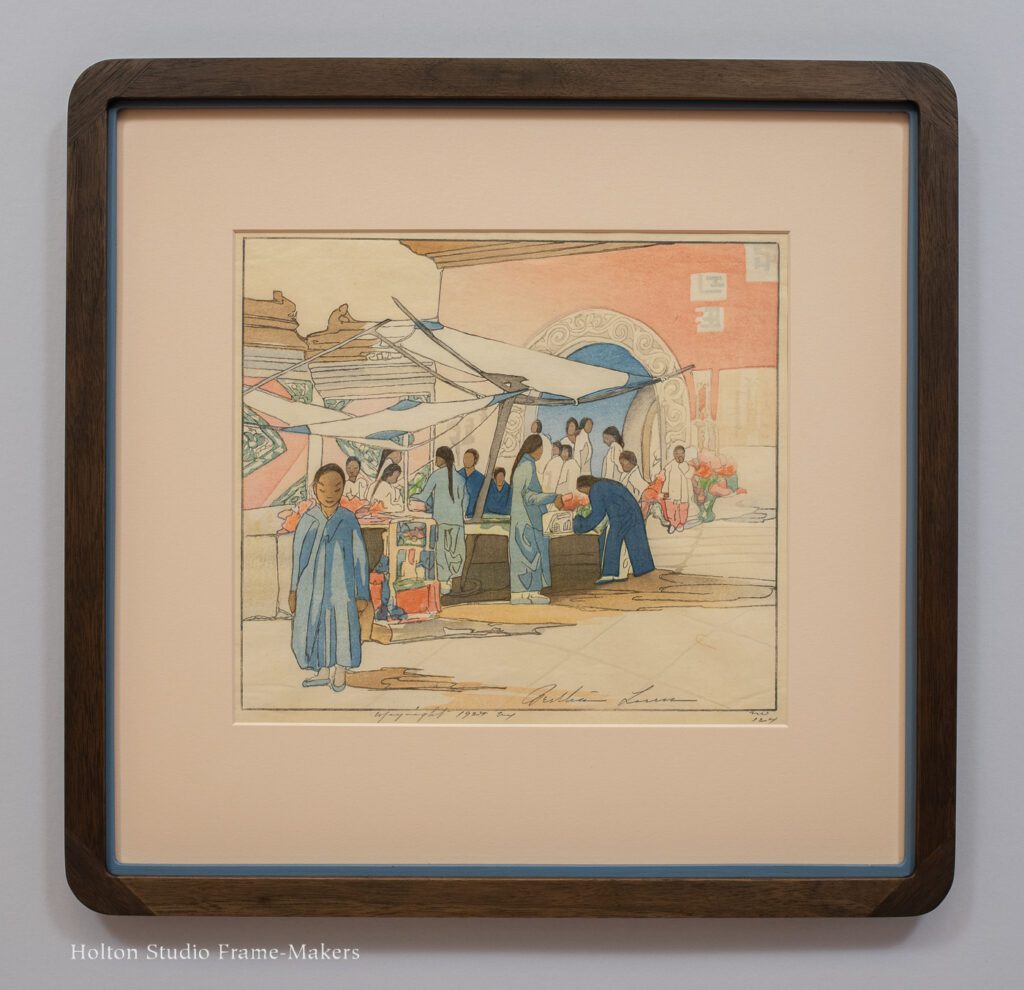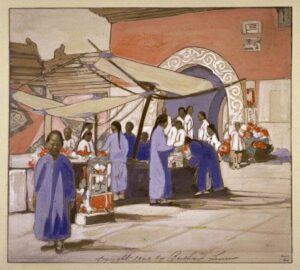This is a color woodcut titled “Lung Fu Sou” and made by American artist Bertha Lum (1879-1954) in 1924 based on a photograph she took of a market she encountered on her travels in China. We set the 9-1/2″ x 10-1/2″ print in a 2-1/2″ wide plain 4-ply solid core cotton rag mat. The 3/4″ wide frame is walnut finished with black linseed oil wax. I find that wood and finish frequently harmonize perfectly with Japanese (and Japanese-inspired) woodblocks. The 1/8″ filet or slip is painted with linseed oil paint in the blue that’s in the print.
I wanted rounded corners to suit the rounded forms in the picture—most notably the great arch in the background. (Architecture in a picture is always a primary clue for the architecture of a suitable frame.) This presented the opportunity to play with a type of joinery I call reverse splines.
 With a standard splined miter joint, the spline is fit into a slot cut through the joint, the slot generally being centered relative to the depth or thickness of the molding. In this case, however, the center is left intact and the frame is relieved on the face and reverse, with the triangular “splines” (not technically splines in this application) laid into those cuts. I let these pieces cut diagonally across the inside corners then filed them back with a round file. (The piece on the reverse can be cut square on the inside before gluing in.) The joint is completed by sanding the outside to a radius.
With a standard splined miter joint, the spline is fit into a slot cut through the joint, the slot generally being centered relative to the depth or thickness of the molding. In this case, however, the center is left intact and the frame is relieved on the face and reverse, with the triangular “splines” (not technically splines in this application) laid into those cuts. I let these pieces cut diagonally across the inside corners then filed them back with a round file. (The piece on the reverse can be cut square on the inside before gluing in.) The joint is completed by sanding the outside to a radius.
The strength of this joint is evident, and is part of its appeal. The way it leads the eye around the corner is also attractive.
The construction’s easier to see in the photos below of a corner sample in a similar design but (obviously) not rounded.
 I highly recommend exploring Bertha-Lum.org, which includes not only a catalogue raisonne, but excellent biographical material and images of her actual woodblocks used to make the prints. The page on technique shows early stages of this piece we framed, including the one at right which is a watercolor over a photograph.
I highly recommend exploring Bertha-Lum.org, which includes not only a catalogue raisonne, but excellent biographical material and images of her actual woodblocks used to make the prints. The page on technique shows early stages of this piece we framed, including the one at right which is a watercolor over a photograph.
Previous Bertha Lum prints we’ve frame are here, here, and here.
« Back to Blog


